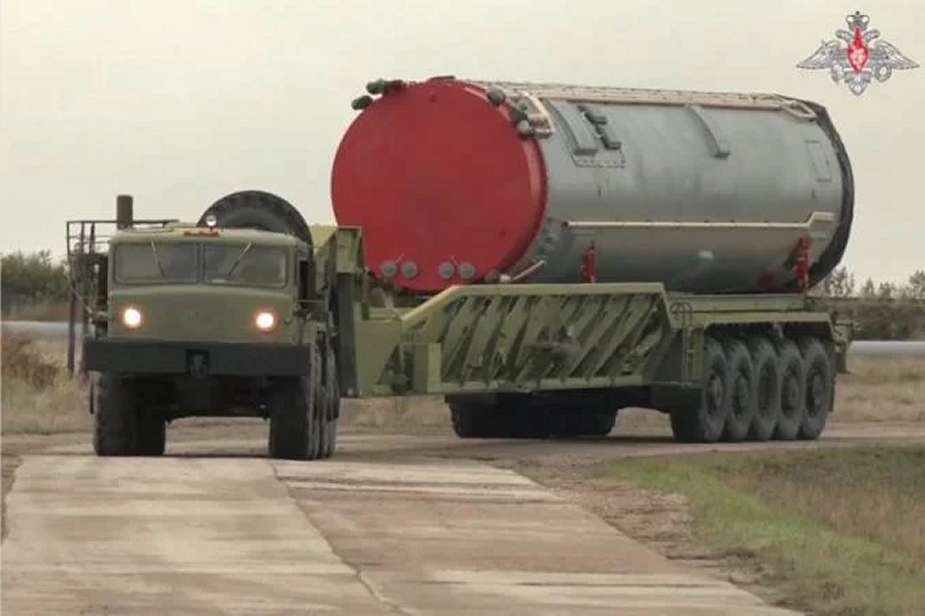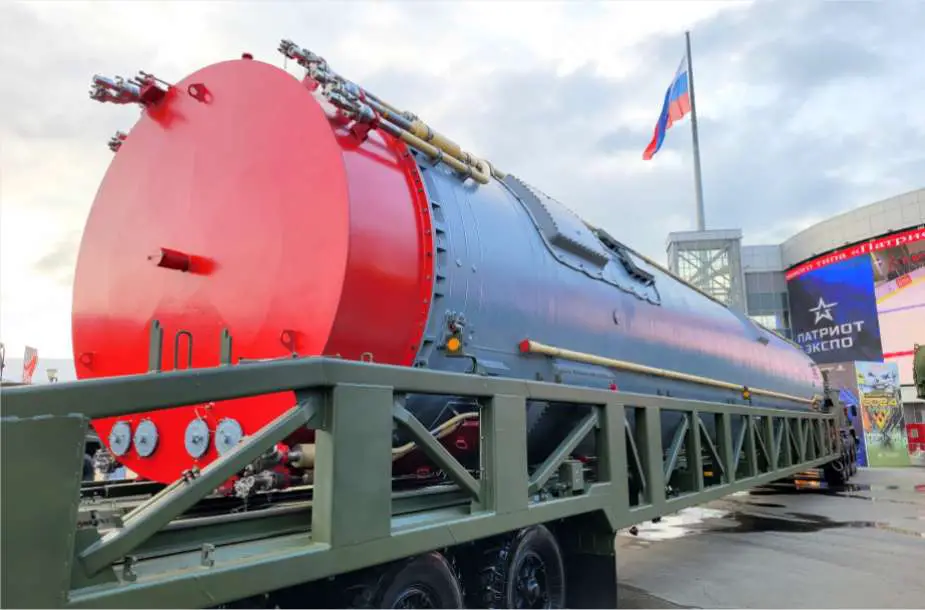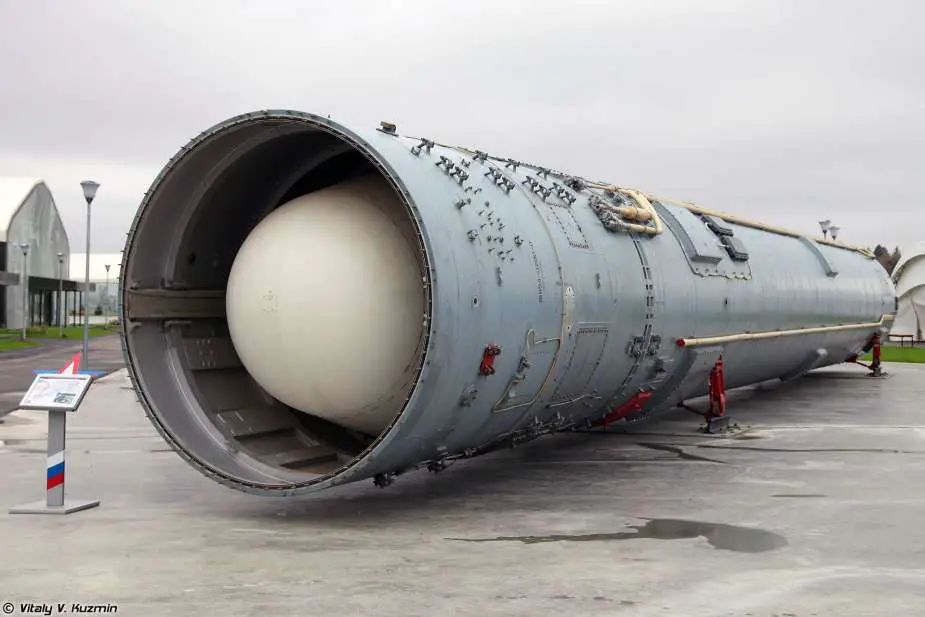Breaking news
Russian Strategic Missile Forces deploy another Avangard hypersonic missile.
According to the Russian Ministry of Defense on November 15, 2023, the 13th Missile Division, also known as Yasnensky missile formation, of the Russian Strategic Missile Forces (RVSN) in the Orenburg region is currently undergoing an extensive re-equipment process, transitioning to the Avangard hypersonic missile system.
Follow Army Recognition on Google News at this link

The 13th Missile Division, also known as Yasnensky missile formation, of the Russian Strategic Missile Forces (RVSN) received an Avangard hypersonic missile (Picture source: Russia MoD)
This transition is part of a broader initiative by the Russian Ministry of Defense to upgrade the Strategic Missile Forces throughout the current year, aimed at enhancing Russia's strategic nuclear capabilities.
The process of re-equipping involves a series of preparatory measures, including loading the 15P071 Avangard Intercontinental Ballistic Missile (ICBM) into the UR-100N UTTH transport and launch container, associating it with the 15S560 booster, and depositing it on the special T183 transport reloader.
The 15S560/C560 booster, derived from the 15A35/SS-19, plays a crucial role in the 15P071 Avangard ICBM system, operating alongside the Transporter Reloader T183. The T183 is designed to facilitate the transport and reloading processes associated with the C560 booster.
The T183 transport reloader transports the C560 booster within the tube and performs reload operations onto various installations without the need for cranes, including transport installers, loaders, storage racks, refrigerator carriages, and related technological equipment. Importantly, these functions are executed bidirectionally, enhancing its operational versatility.
The T183 has dimensions with a length of 33.1 meters, a width of 3.66 meters, and a height (with the C560) of 4.55 meters. The trailer carriage, integral for transport, measures 27 meters in length and weighs 24,250 kilograms. The overall weight of the T183, including the vehicle and the trailer but excluding the cargo, is 46,750 kilograms, with a ground clearance of 356 millimeters.

The Avangard missile includes the use of the 15S560 booster and of the special T183 transport reloader (Picture source: Twitter/Michael Jerdev)
The C560 booster is designed to supply high kinetic energy for the programmed flight speed development of the Avangard hypersonic guided warhead and overcoming atmospheric resistance. Operationally, the C560 exhibits a weight of 8,000 kilograms without propellants, with an additional 93,000 kilograms accounting for the propellants. The length is specified at 21.1 meters, and the diameter at 2.5 meters.
The infrastructure of the position area has been thoroughly prepared to accommodate the new Avangard system, encompassing facilities for training, duty shifts, combat readiness, and personnel rest. The technological operations involved in this transition extended over several hours.
As of 2022, six Avangard units are reported to be in service, marking a significant milestone in Russia's strategic capabilities.
Sources within the Russian Ministry of Defense emphasize the Avangard's hypersonic capabilities, as the system's main objective is to outmaneuver and surpass enemy missile defenses effectively, delivering a hypersonic guided warhead with a reportedly explosive power ranging from 800 kilotons to two megatons.
The Avangard missile system, identified as 15P771 or 15P071, is a Russian hypersonic glide vehicle (HGV) equipped with a guided warhead known as 15Yu71 or Yu-71. Developed by OKB-52 and manufactured by the Votkinsk plant, this missile system is capable of being transported as a Multiple Independently Targetable Reentry Vehicle (MIRV) payload by an intercontinental ballistic missile (ICBM), including the UR-100UTTKh, R-36M2, RS-28 Sarmat, and the UR-100N UTTH.

The UR-100N UTTH (NATO classification - SS-19 mod.2 Stiletto) is a Russian Intercontinental Ballistic Missile (ICBM) that was introduced into service on November 7, 1979 (Picture source: Vitaly Kuzmin)
The UR-100N UTTH (NATO classification - SS-19 mod.2 Stiletto) is a Russian Intercontinental Ballistic Missile (ICBM) system that was introduced into service on November 7, 1979. Developed by the Central Design Bureau of Mechanical Engineering and manufactured by the State Research and Production Space Center named after M.V. Khrunichev, the UR-100N UTTH is a modification of the UR-100N ICBM missile, featuring improved reliability in its propulsion systems, enhanced control system characteristics, and improved combat equipment.
The stationary missile system designated 15P035, incorporated ten 15A35 intercontinental ballistic missiles housed in 15P735 silo launchers, alongside a highly secure 15V52U unified command post. The UR-100N UTTH is characterized by its two-stage configuration with a length of 24.3 m, a warhead weight of 4,350 kg, a maximum range of 10,000 km, a maximum diameter of 2.5 m, a launch weight of 105.6 tons, and a fuel mass of 93.1 tons.
The development of the Avangard system dates back to the Soviet era, with the original objective being to develop a response to the US missile defense system, using the existing UR-100N UTTH ICBM as the carrier. Despite facing delays due to various circumstances, the Avangard was officially deployed for combat duty in December 2019.
The Avangard was publicly unveiled by Russian President Vladimir Putin on March 1, 2018, as part of a larger strategic weapons program, including the hypersonic Kh-47 Kinzhal nuclear-capable missile, the nuclear-powered Poseidon torpedo system, and the 9M730 Burevestnik nuclear-powered cruise missile.
The Avangard, previously designated as Objekt 4202, Yu-71, and Yu-74, has the capability to deliver both nuclear and conventional payloads. It purportedly reaches speeds of up to Mach 28, an intercontinental range, translating to approximately 9.5 kilometers per second, even without the warhead, delivering kinetic energy equivalent to 18 tons of TNT.

The Avangard missile system is usually carried out by an 8x8 military truck on a T158 transport reloader (Picture source: Twitter/Michael Jerdev)


























